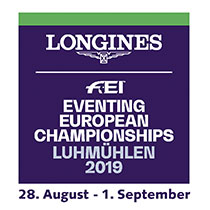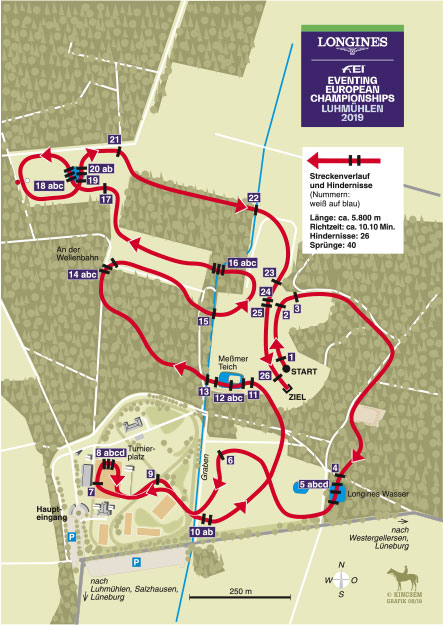Auftakt der Sparkasse Harburg-Buxtehude
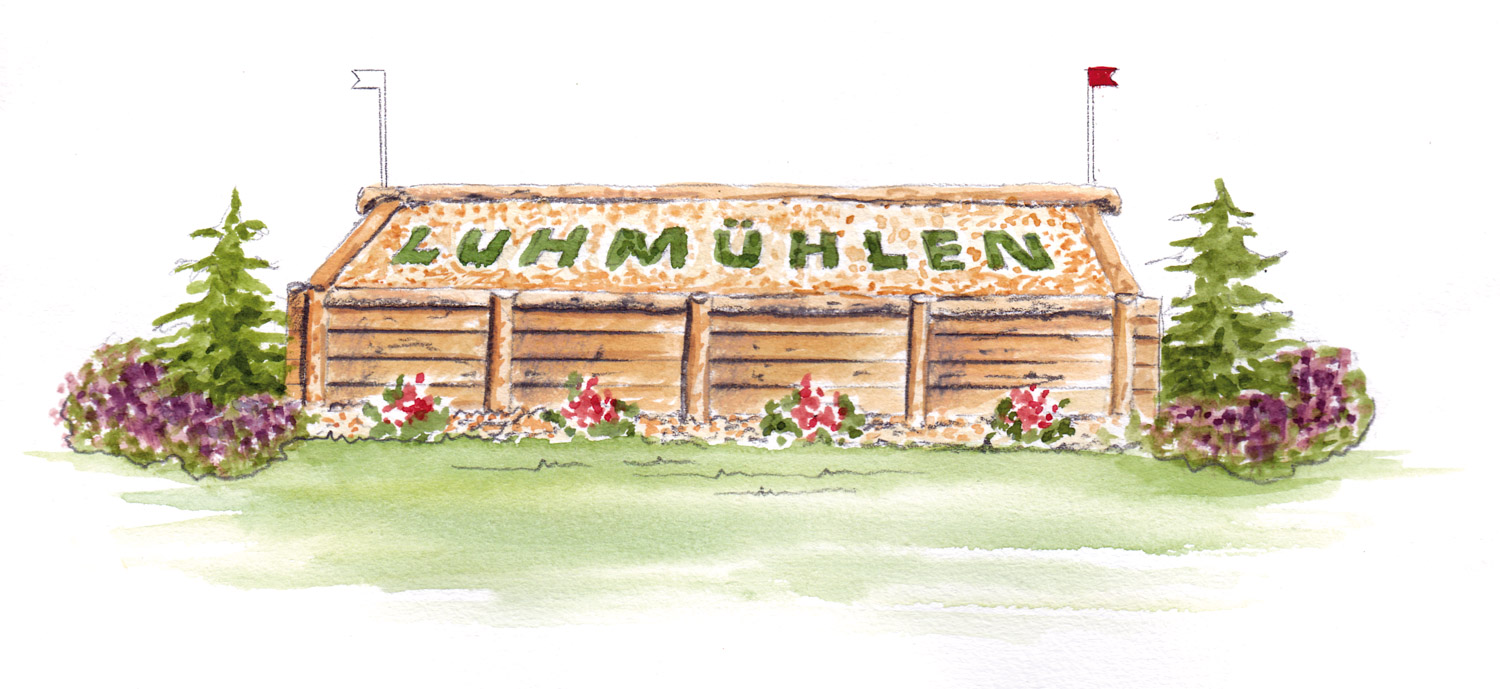
As always the first 3 fences, the Auftakt der Sparkasse Harburg-Buxtehude (1), the Buschoxer (2), and the Voltaire Eichen (3) are there for the horses and athletes to settle the nerves. They are at maximum and should allow the riders to get their horses ‘in the air’ and in a good shape.
Buschoxer
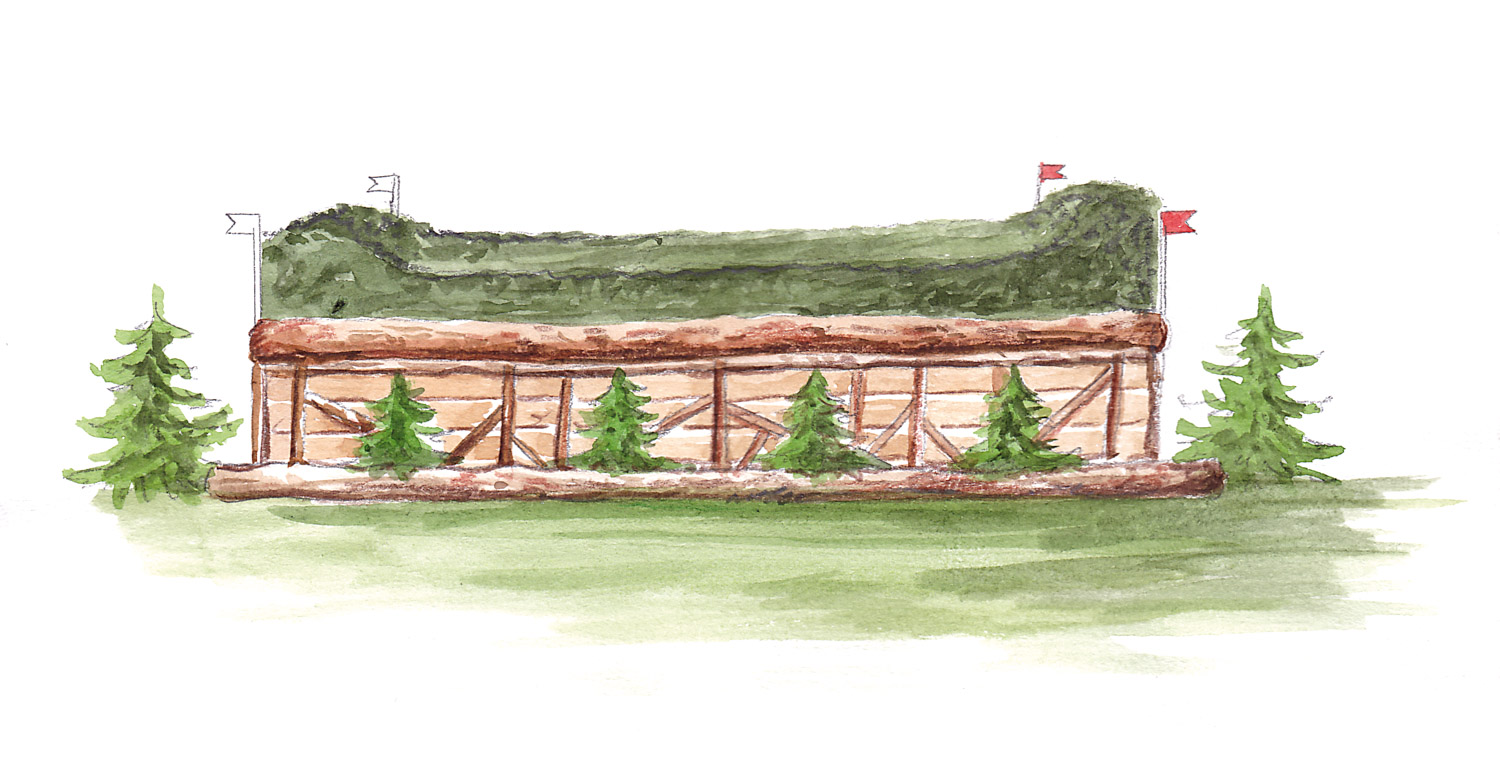
As always the first 3 fences, the Auftakt der Sparkasse Harburg-Buxtehude (1), the Buschoxer (2), and the Voltaire Eichen (3) are there for the horses and athletes to settle the nerves. They are at maximum and should allow the riders to get their horses ‘in the air’ and in a good shape.
Voltaire Eichen
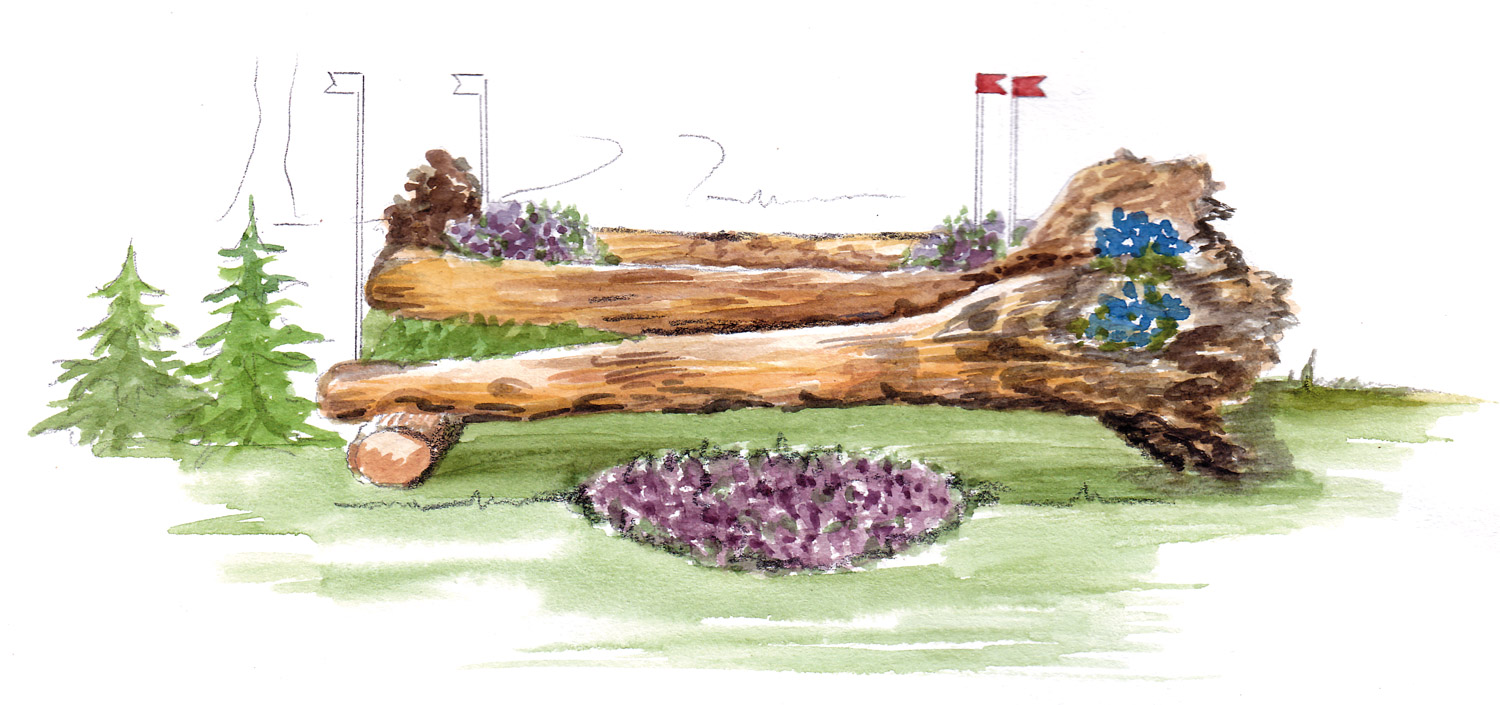
As always the first 3 fences, the Auftakt der Sparkasse Harburg-Buxtehude (1), the Buschoxer (2), and the Voltaire Eichen (3) are there for the horses and athletes to settle the nerves. They are at maximum and should allow the riders to get their horses ‘in the air’ and in a good shape.
Longines Wasser
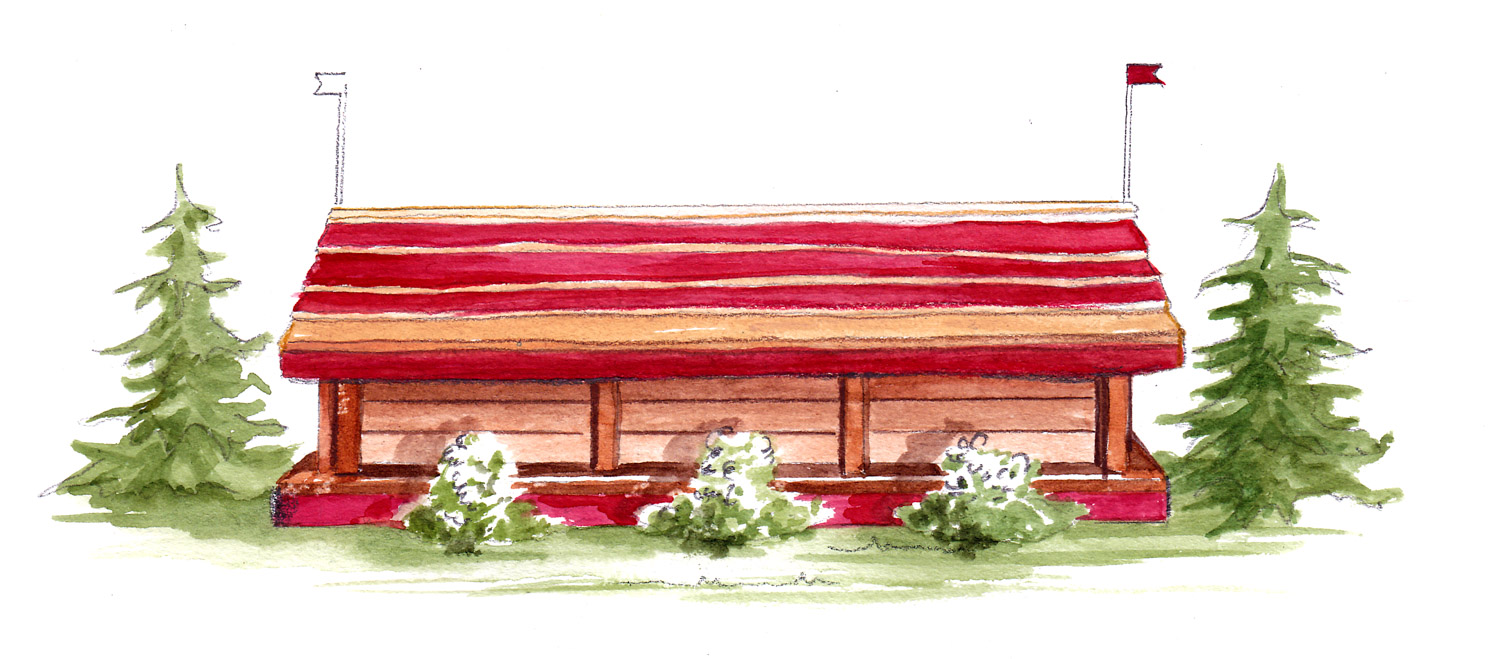
A bit of a gallop through the woods before reappearing at the Longines Wasser (4) which is where horses and riders need to be switched on. This fence has a near maximum drop and will be the first time that horses see a big crowd with atmosphere at one of the fences on the course. How this is jumped will determine how well the Longines Wasser (5abcd) jumps since it will all happen very quickly here. Riders won’t want too big a jump over number 4 or they’ll not have the control they would like to take the quick route at the water.
Longines Wasser (5abcd)
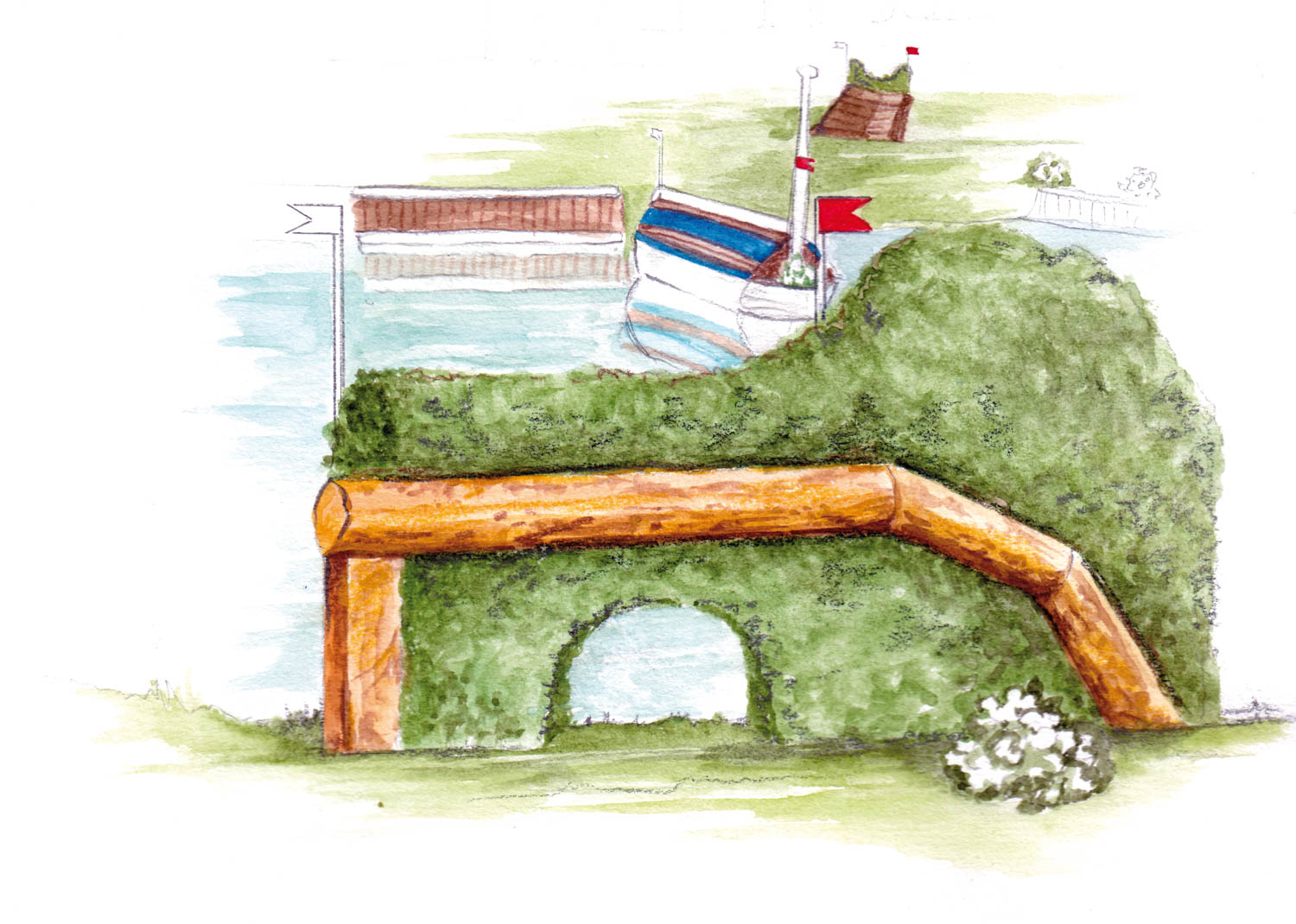
A bit of a gallop through the woods before reappearing at the Longines Wasser (4) which is where horses and riders need to be switched on. This fence has a near maximum drop and will be the first time that horses see a big crowd with atmosphere at one of the fences on the course. How this is jumped will determine how well the Longines Wasser (5abcd) jumps since it will all happen very quickly here. Riders won’t want too big a jump over number 4 or they’ll not have the control they would like to take the quick route at the water.
The quick route here is over the brush into the water, 4 strides to the angled boat in the water, and then what should be 3 strides to the narrow brush at the top of the slope. This is a real test of horsemanship for the riders and confidence and honesty on the part of the horses. Not an easy fence but there is an easier, very time consuming route for those who may not like the quick route which entails 4 jumping efforts.
Hof Sudermühlens Reiterbar
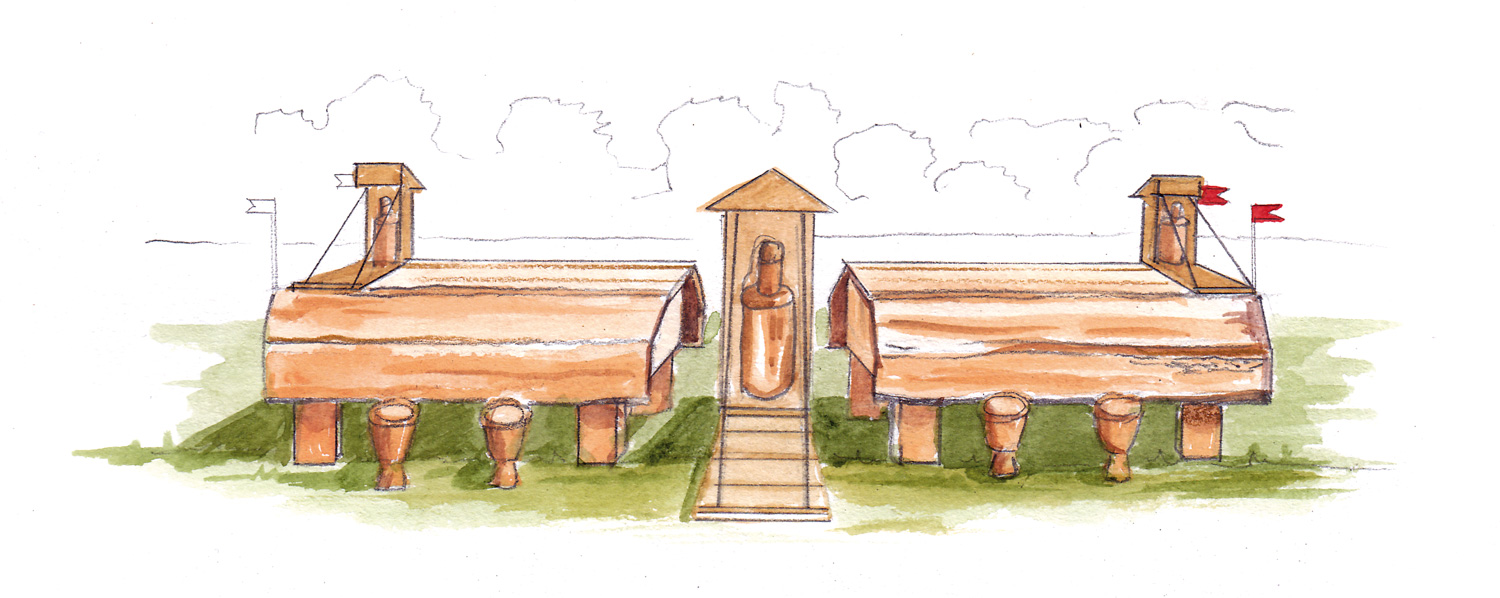
Hof Sudermühlens Reiterbar (6) is what we call a let up fence even though it is at maximum dimensions as they make their way to the main arena for the next questions.
Der Manzke Tisch
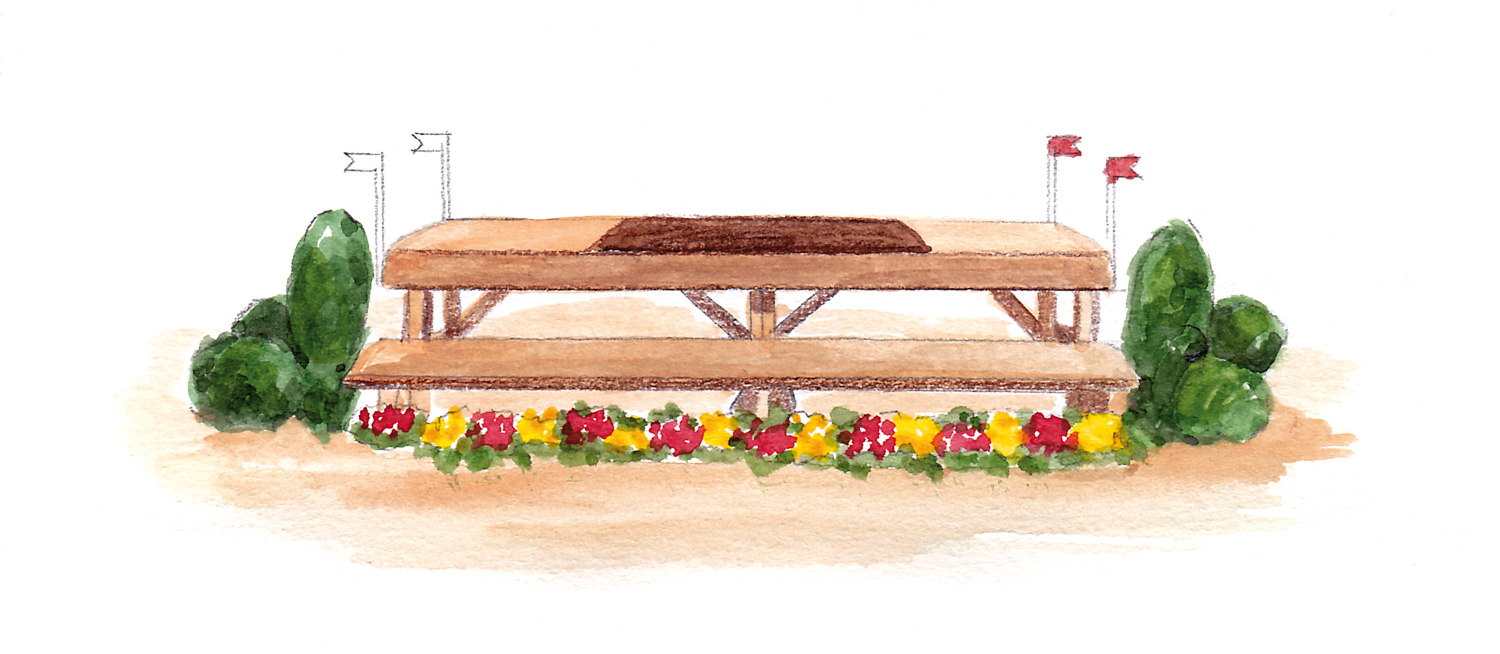
The Manzke Tisch (7) is one of the fences fitted with the MIM system, one of the FEI Approved Frangible Devices, and is straightforward, albeit at maximum dimensions, but it does relate to the next fence.
Longines Kombination (8abcd)

The Longines Kombination (8abcd) is designed to examine the rider’s ability and also the horses’ manoeuvrability and confidence with the curving right hand line over big fences – corner (a) to spread (b) to corner (c/d). If the first two elements are not ridden well the last one becomes very difficult and so it may be that we see several opting to go to the other end of the arena to jump the two other corners (c and d) on a curving line to the left which are the option for this one corner.
Gärtnerei Wredes Rennbahnsprung
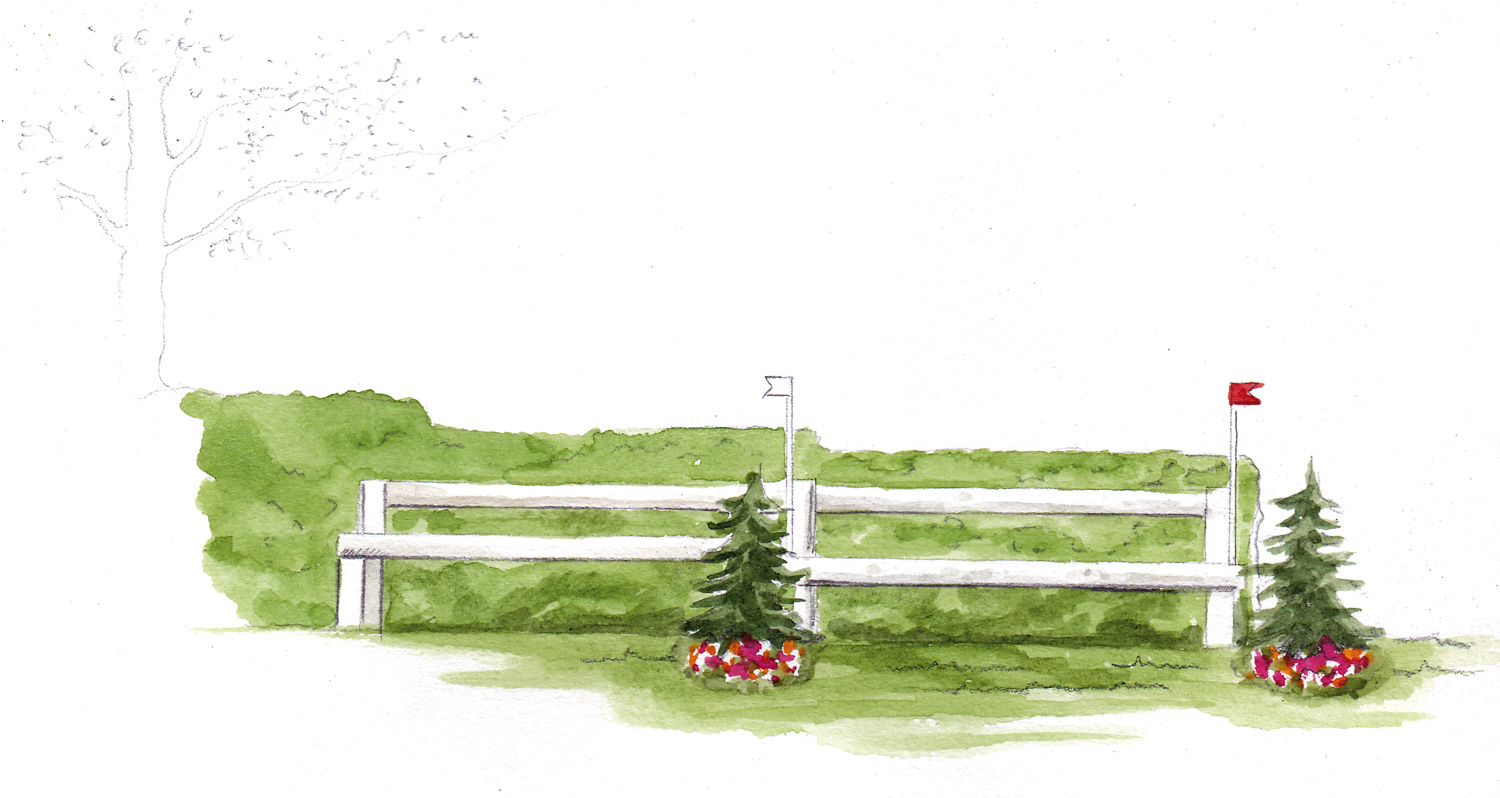
The Gärtnerei Wredes Rennbahnsprung (9) is one of the old steeplechase fences which those of us who are bit older will remember. It is straightforward but needs respecting.
Hannoveraner Gatter (10ab)
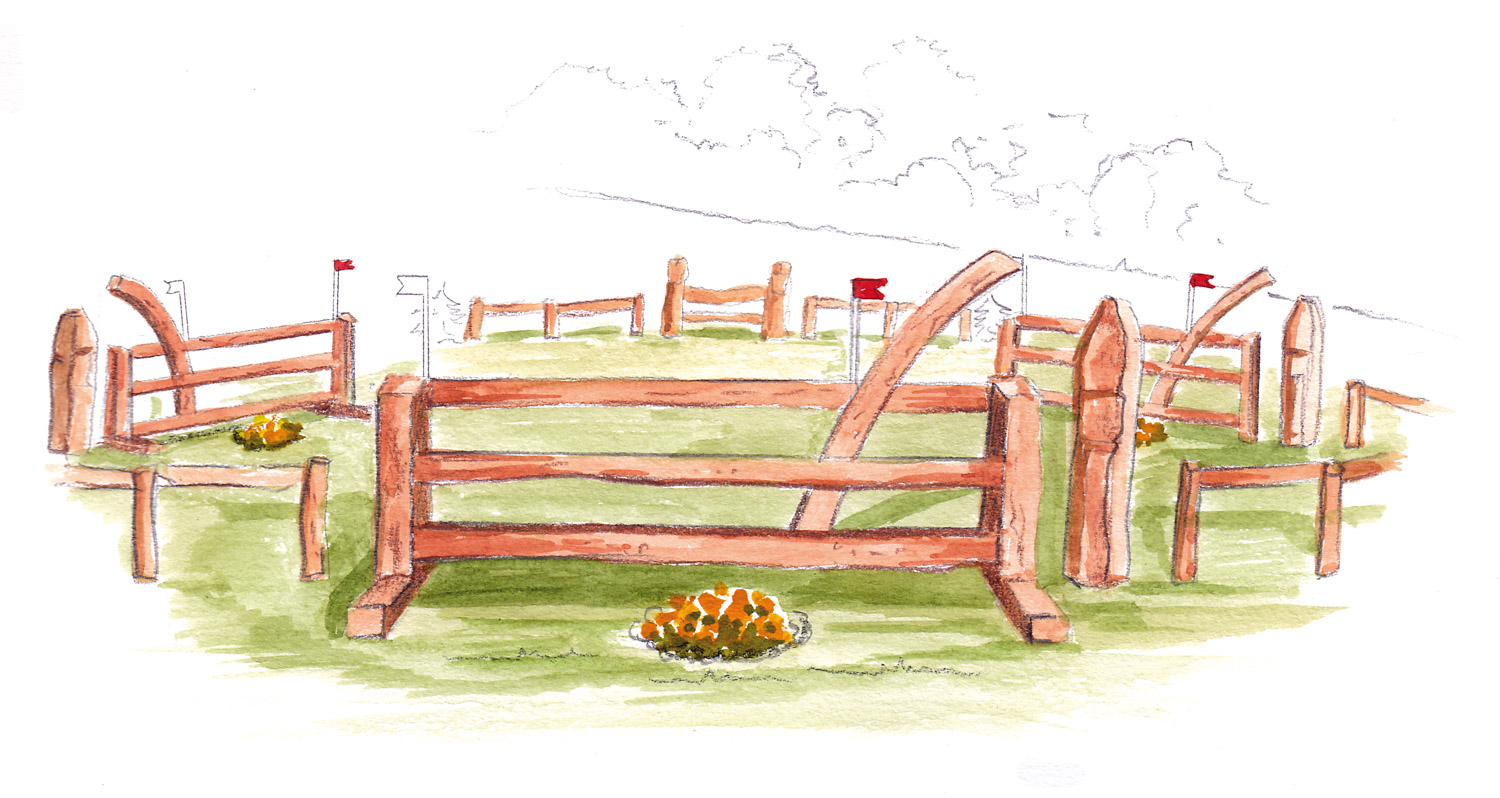
Then to the Hannoveraner Gatter (10ab) where riders have a choice to either take the direct route on 2 strides slightly downhill or 3 strides to give themselves a bit more time. All these gates have MIM clips on and I am sure that the riders and horses here should make it all look pretty straightforward. Just a reminder though, if the frangible devices are activated it is an automatic 11 penalties which could prove costly in the final reckoning.
Holzstoß
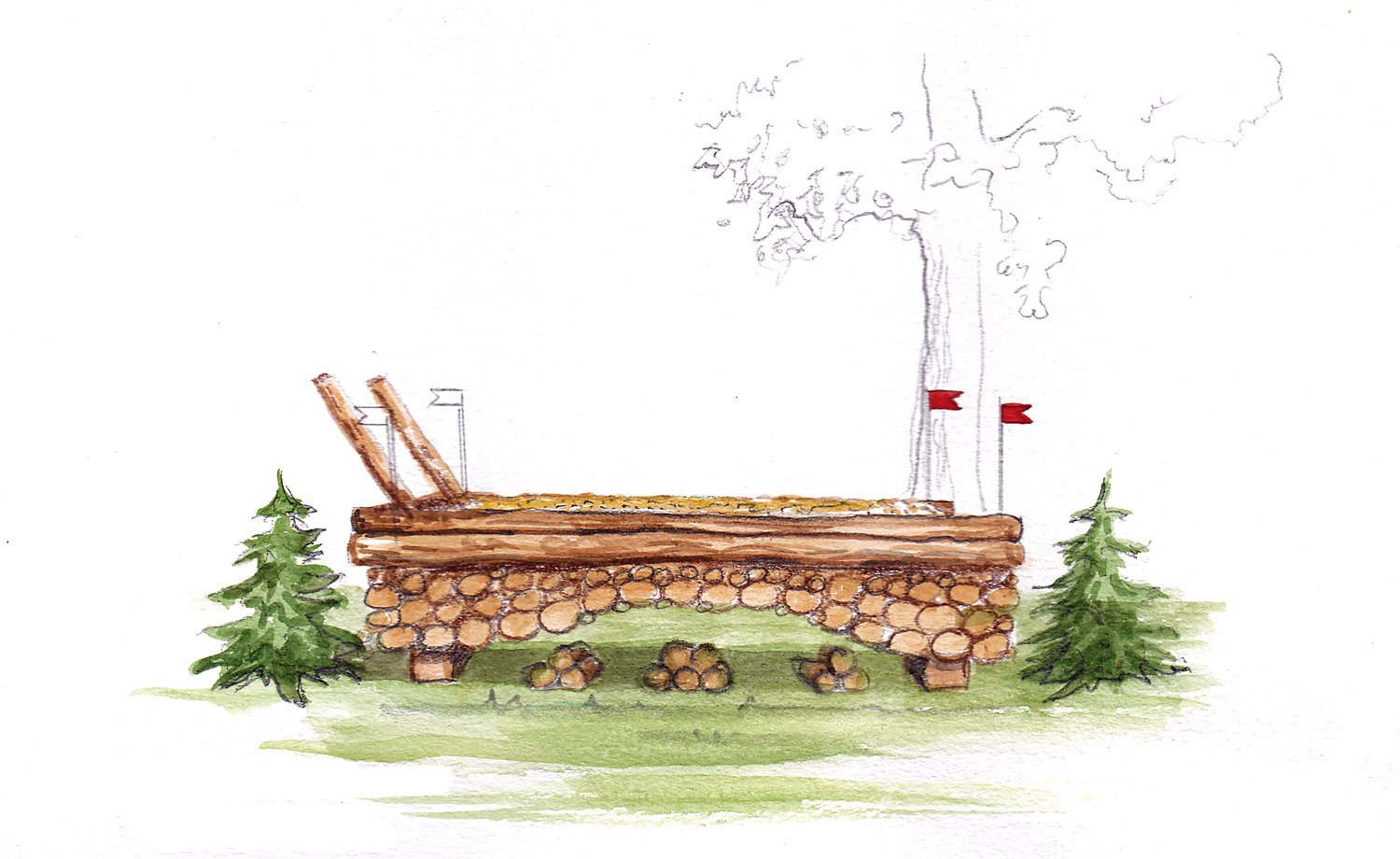
The Holzstoß (11) is another maximum although straightforward fence and I would expect the riders to use it to help set up for the Meßmer Teich (12abc) which comes very quickly after.
Meßmer Teich (12abc)
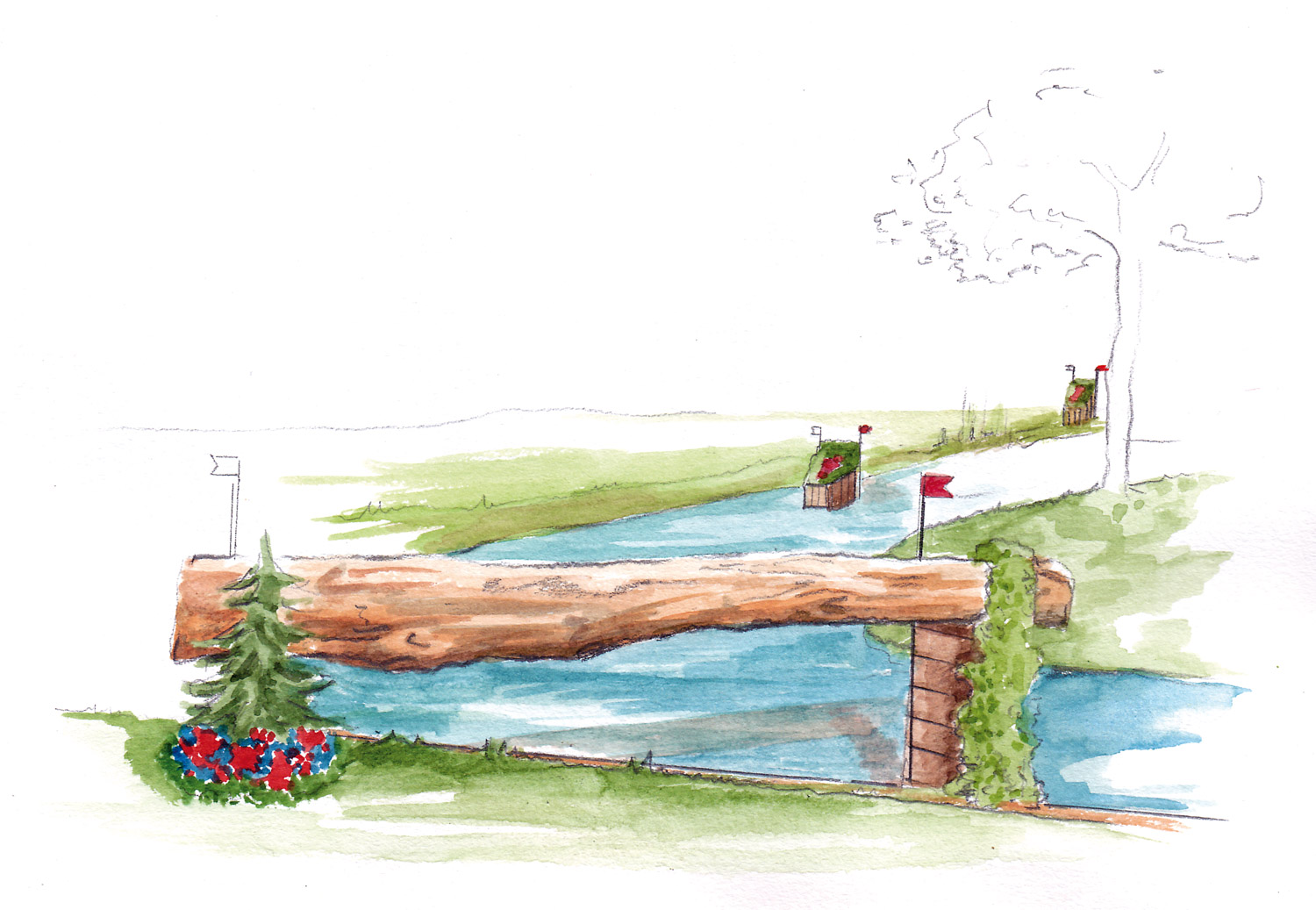
Meßmer Teich (12abc): This second water combination gives riders a choice – either straight down the middle over a big drop in (12a), 4 strides to a triple brush (12b), followed by another triple brush (12c) at the top of the slope out of the water, or take a long circuitous route which will take ages. This question requires bold, committed, and athletic riding and bravery, confidence, and honesty from the horse. It is a mix of bold fences and accuracy fences. Horses nowadays are very good at ‘locking on’ to what is in front of them and so even what we refer to as ‘skinny’ fences seem to jump pretty easily making a course designer’s job even more challenging. We shall see!
Meßmer Mühlenhaus
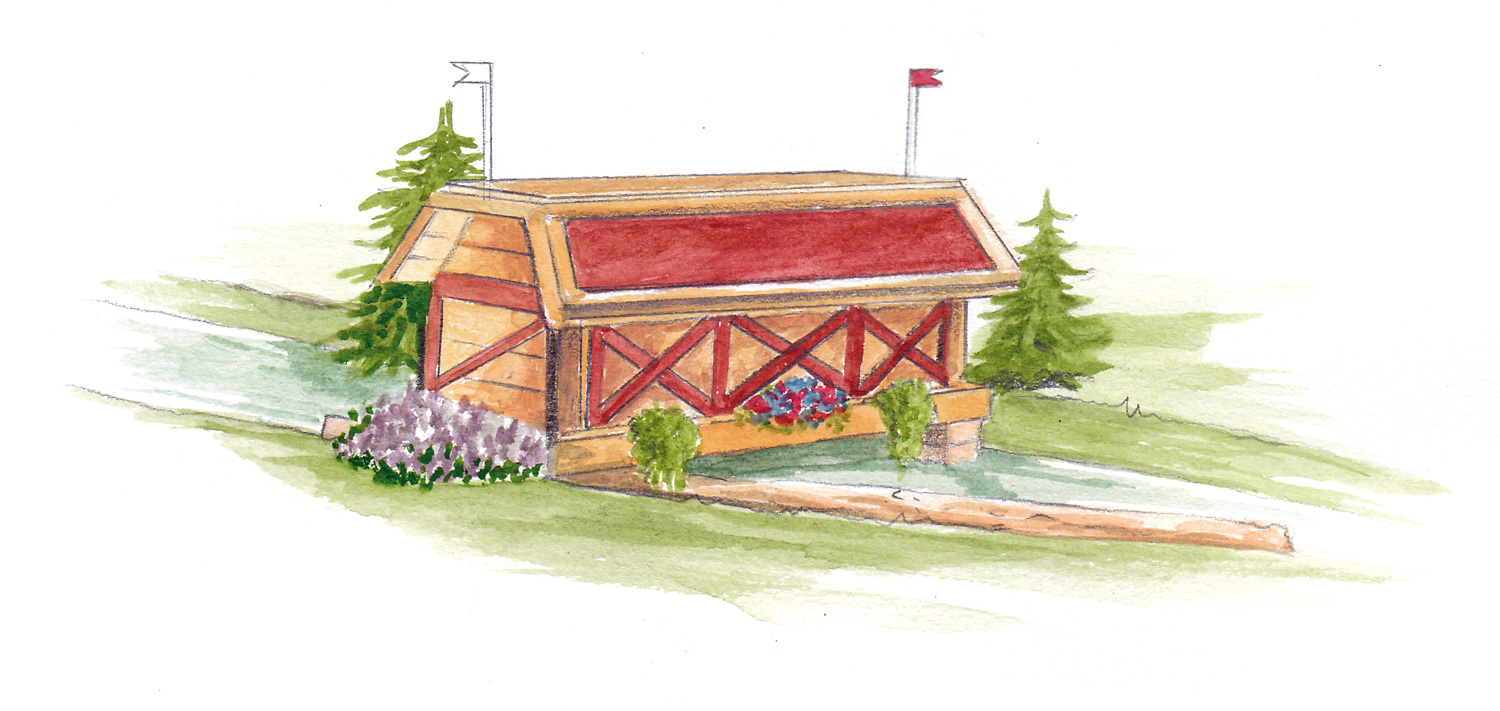
The Meßmer Mühlenhaus (13) is there to complete this sequence of fences and should not pose too much of a challenge at this level. Riders do need to still pay attention though to get their line right.
fischer Wellenbahn (14abc)

14a
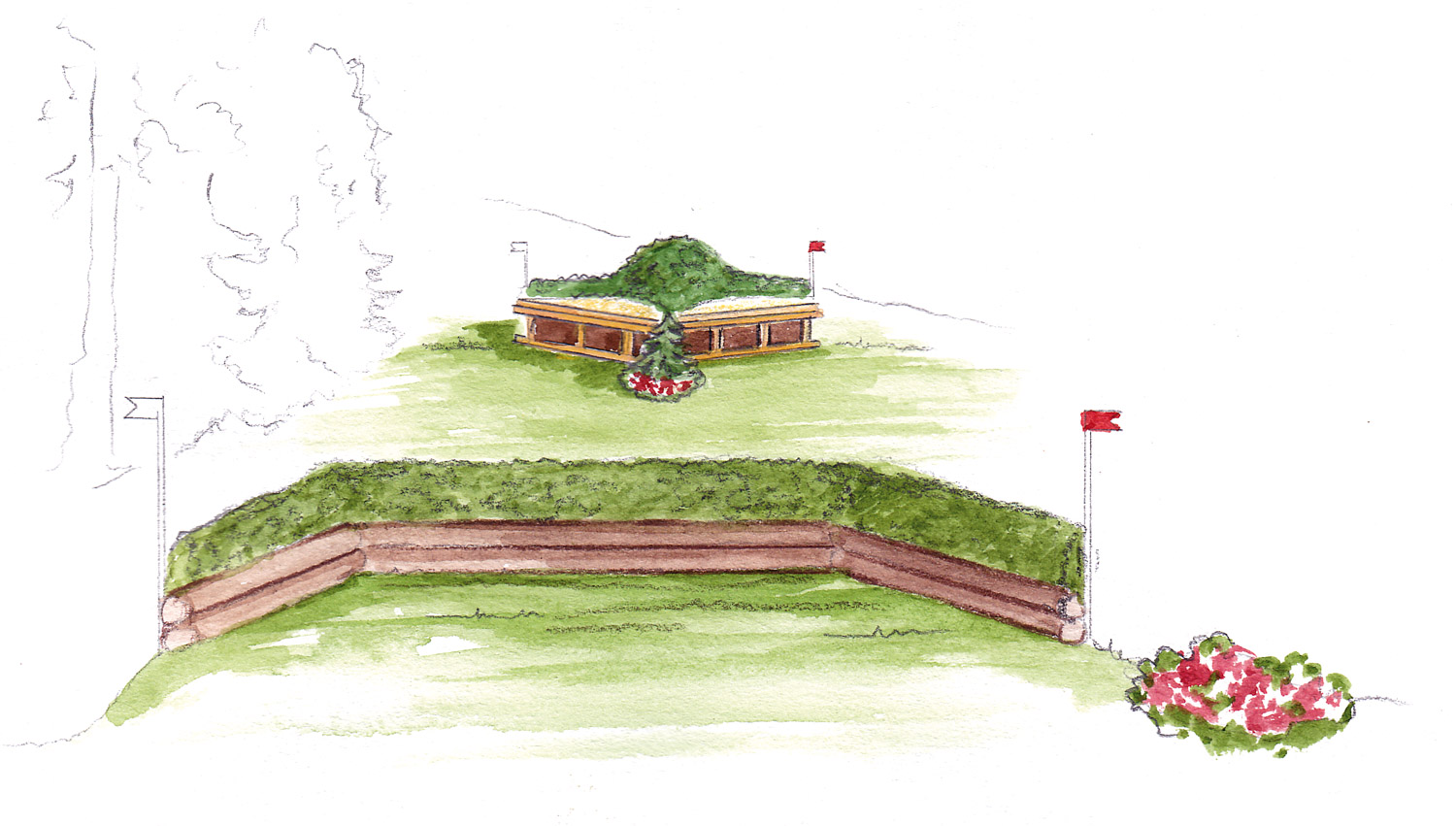
14bc
On then through the woods to the fischer Wellenbahn (14abc) which has a new look. The wall which makes up the second element was remembered by Julia Otto as being there even though it has been buried for a number of years and we thought that it would be good to bring it back to life for these championships. The silver birch rails (14a) are frangible and look impressive at the top of the rise; 3 strides down to the brush on top of the wall (14b) and then another 3 strides to the corner (14c) where riders can choose which side they prefer. Athleticism, confidence, and commitment along with the riders’ ability to ride this type of question is what is being looked for here.
Horseware Jump
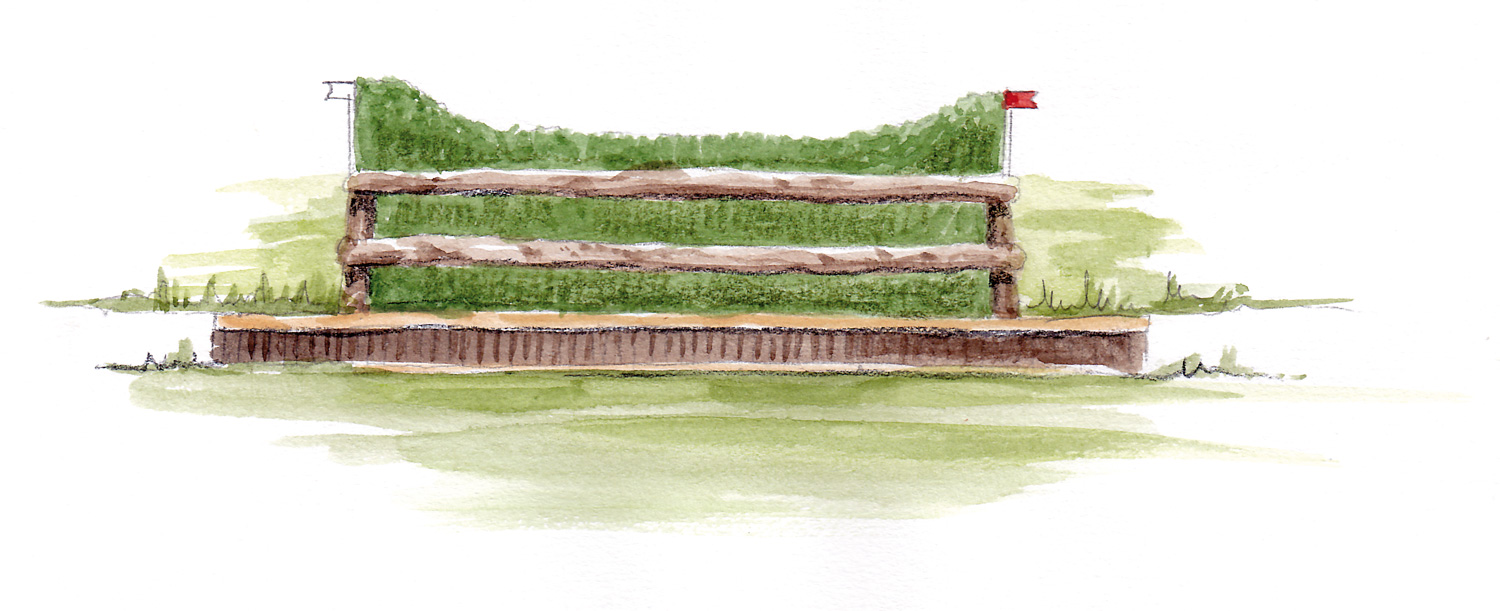
The big, impressive Horseware Jump (15) is very inviting and even though it is spectacular it should not create any concerns for horses or riders as they head for the LVM Am Waldrand (16abc), a classic cross country fence with 1 stride between the frangible rails (16a) and the ditch (16b) and then 1 stride to the angled log (16c). Making them jump across the ditch can bring another factor in to play in that the riders will be wanting their horses to jump on the line through the combination whereas some horses may drift a bit jumping across the ditch at an angle. Again, for those who do not fancy the quick route there is an option to the last element which will use up valuable seconds.
LVM Am Waldrand (16abc)
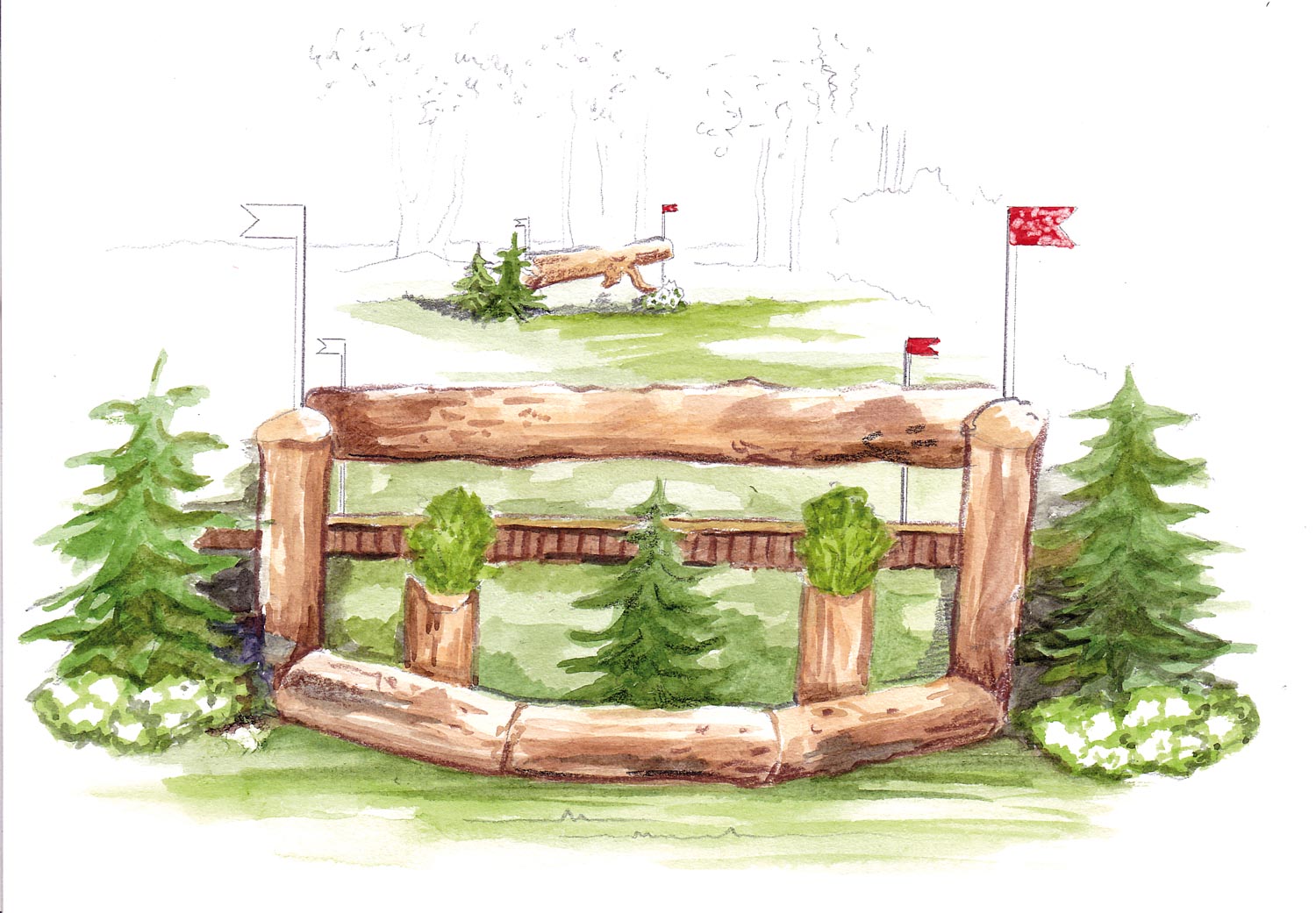
The big, impressive Horseware Jump (15) is very inviting and even though it is spectacular it should not create any concerns for horses or riders as they head for the LVM Am Waldrand (16abc), a classic cross country fence with 1 stride between the frangible rails (16a) and the ditch (16b) and then 1 stride to the angled log (16c). Making them jump across the ditch can bring another factor in to play in that the riders will be wanting their horses to jump on the line through the combination whereas some horses may drift a bit jumping across the ditch at an angle. Again, for those who do not fancy the quick route there is an option to the last element which will use up valuable seconds.
Rathaus
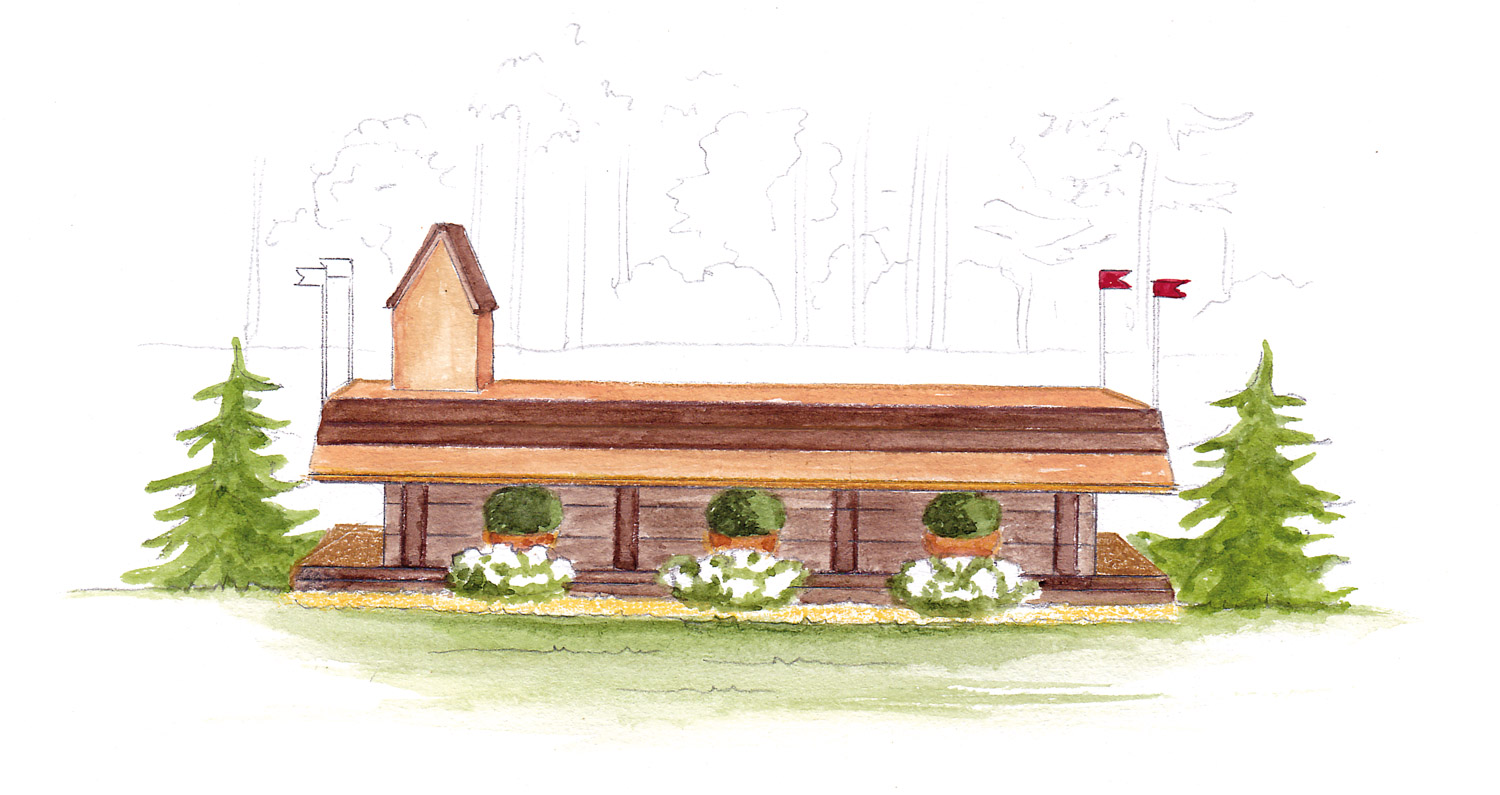
The Rathaus (17) is straightforward and will serve as a bit of a set up fence for the next question at the Lake Land Rover (18abc). The quick route of the two slightly offset brushes (18a and 18b) on 1 stride seeks out those who are feeling confident whereas those who may be feeling a bit more conservative may well choose the longer option here, again using up time. Once they are in over 18b and its big drop in to the water there is the small matter of the narrow flower box (18c) as the last element and so riders will need to respond quickly to what their horses give them over 18b or risk a run out. There is an option to the direct line with another flower box on the far bank for those who may need a bit more time to get organised. Honesty, fitness, and decision making have to be considered at this stage of the course – do I go straight and risk a fault or do I play it safe but waste time?
Lake Land Rover (18abc)
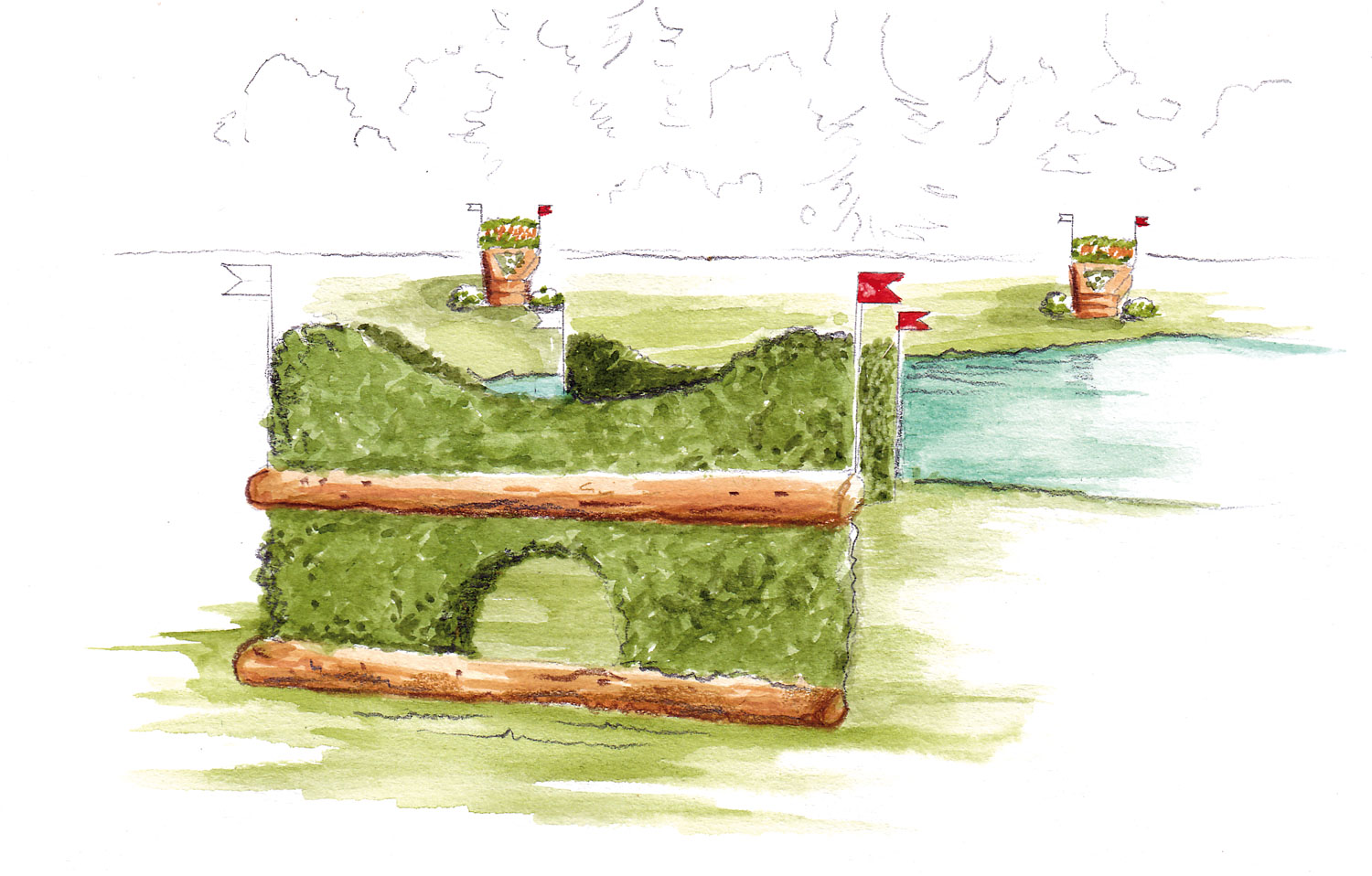
The Rathaus (17) is straightforward and will serve as a bit of a set up fence for the next question at the Lake Land Rover (18abc). The quick route of the two slightly offset brushes (18a and 18b) on 1 stride seeks out those who are feeling confident whereas those who may be feeling a bit more conservative may well choose the longer option here, again using up time. Once they are in over 18b and its big drop in to the water there is the small matter of the narrow flower box (18c) as the last element and so riders will need to respond quickly to what their horses give them over 18b or risk a run out. There is an option to the direct line with another flower box on the far bank for those who may need a bit more time to get organised. Honesty, fitness, and decision making have to be considered at this stage of the course – do I go straight and risk a fault or do I play it safe but waste time?
Lake Land Rover (19/20a)
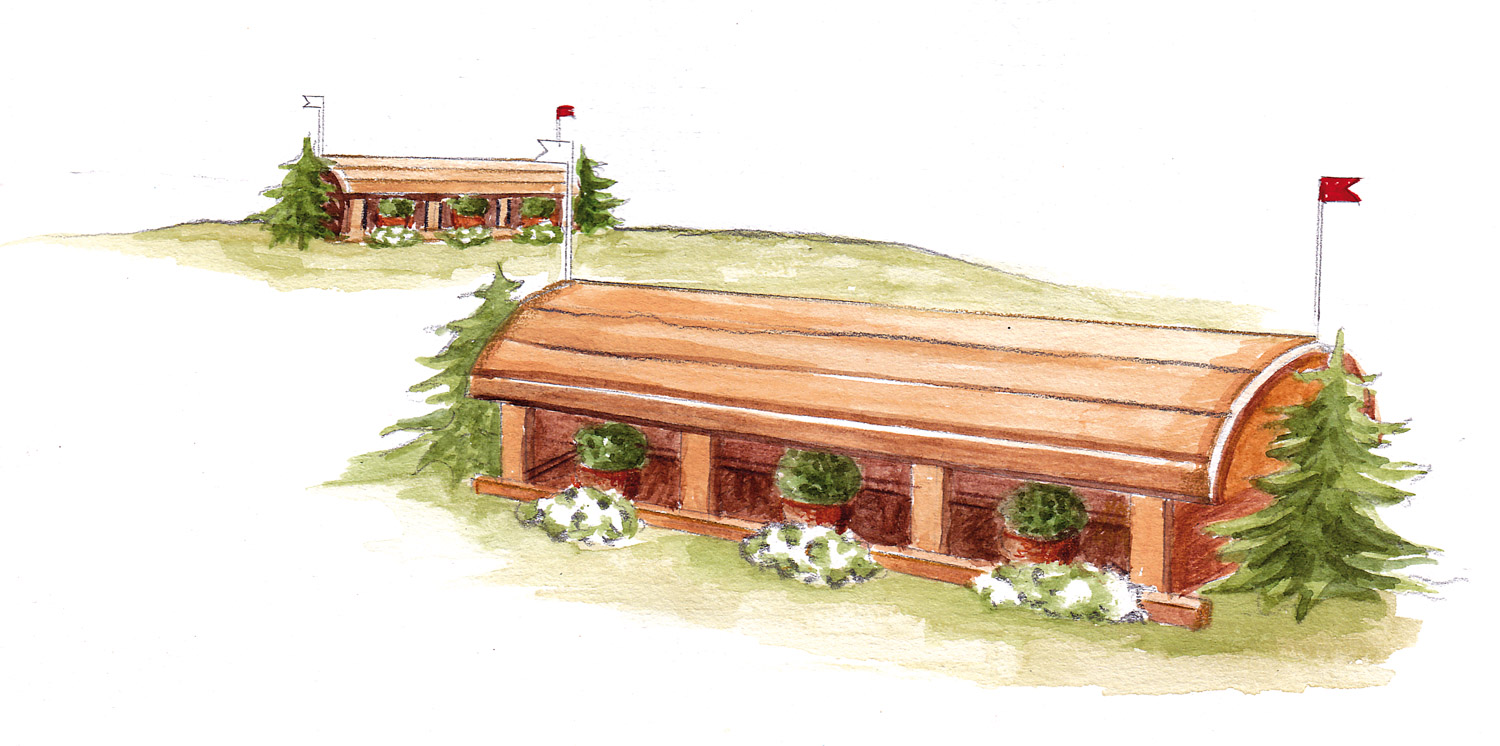
The loop around this field then brings everyone back to the same water but with a different question. This time they jump the Lake Land Rover (19/20ab) with the direct line being the two boathouses (19/20a) followed by the Bird (20b) sitting on its nest in the middle of the water. I am still checking that horses and riders are still switched on and paying attention, a run out here would be so frustrating. For those who may be tiring by this stage I have separately numbered the boathouses and given an alternative to the second one (20a) so that they can have a flowing but long option to get back to the bird (20b).
Lake Land Rover (20b)
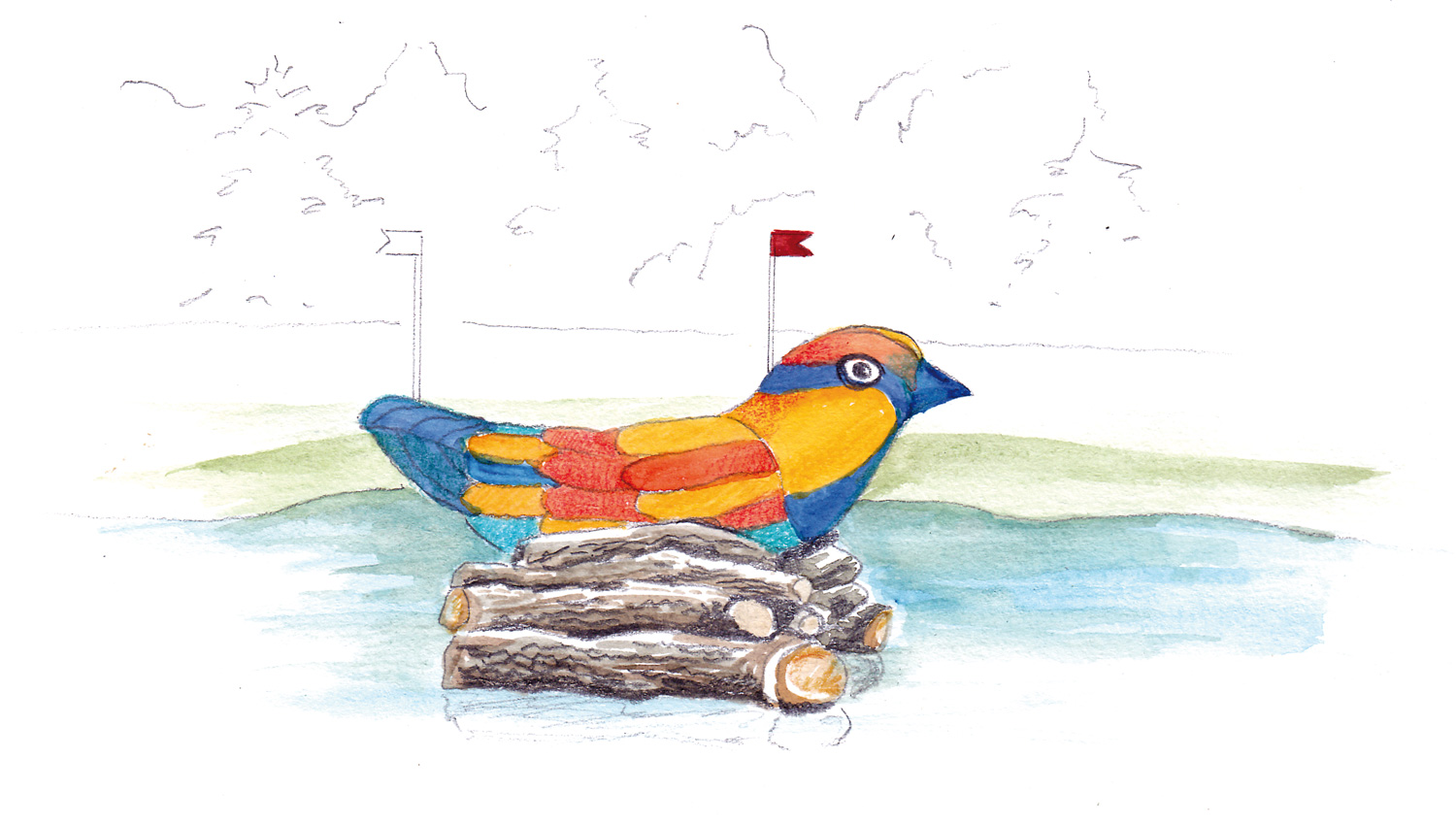
The loop around this field then brings everyone back to the same water but with a different question. This time they jump the Lake Land Rover (19/20ab) with the direct line being the two boathouses (19/20a) followed by the Bird (20b) sitting on its nest in the middle of the water. I am still checking that horses and riders are still switched on and paying attention, a run out here would be so frustrating. For those who may be tiring by this stage I have separately numbered the boathouses and given an alternative to the second one (20a) so that they can have a flowing but long option to get back to the bird (20b).
Charles Owen Royal Works
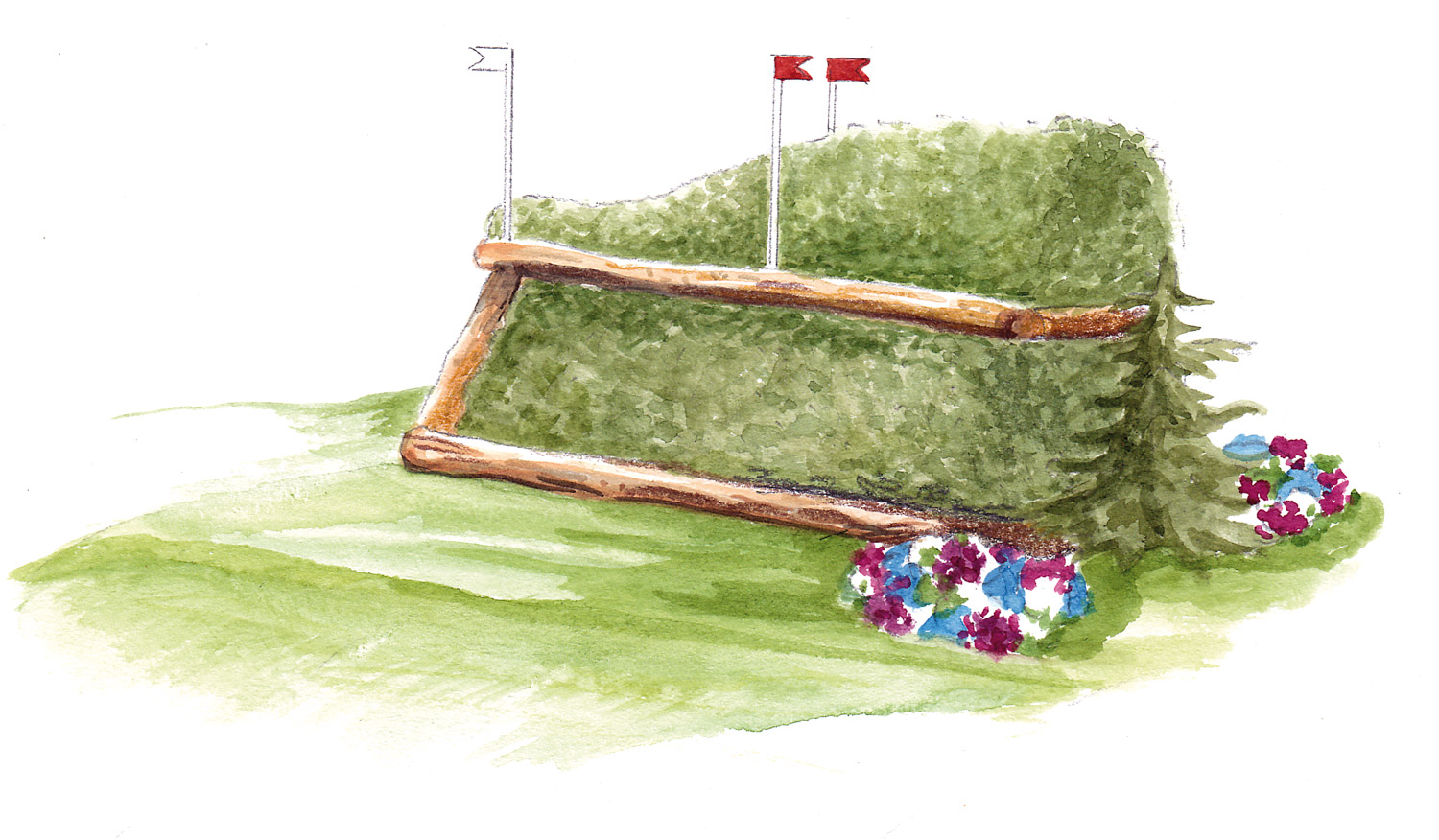
The Charles Owen Royal Works (21) brush corner at the top of the slope coming out of the crater looks really big and will be a test of fitness, honesty, and athleticism at this stage of the course. The long route here is really only for those who may be tiring.
Trakehner
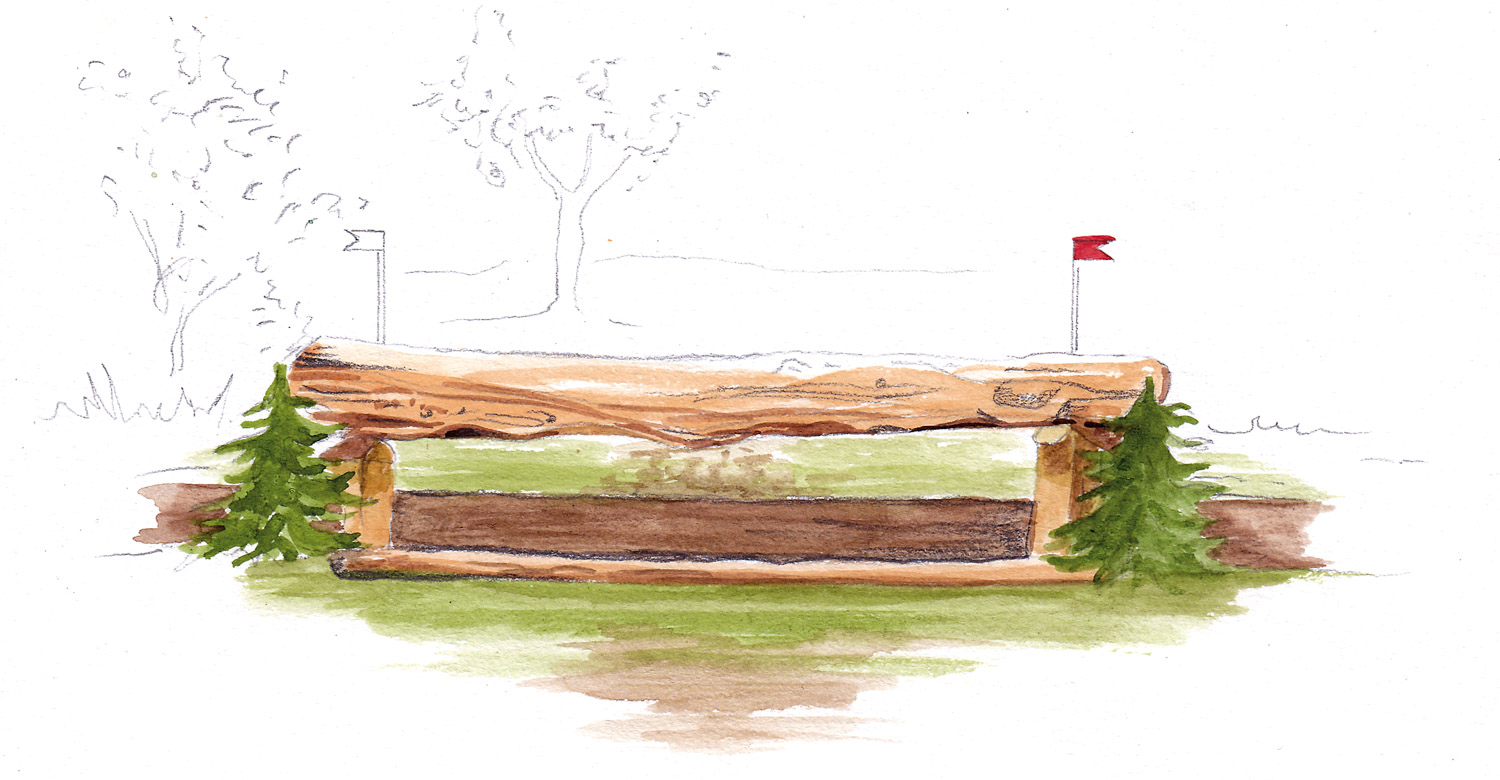
A long gallop then through the woods to the Trakehner (22), a big imposing fence which should jump really well especially coming from dark to light.
Oxer
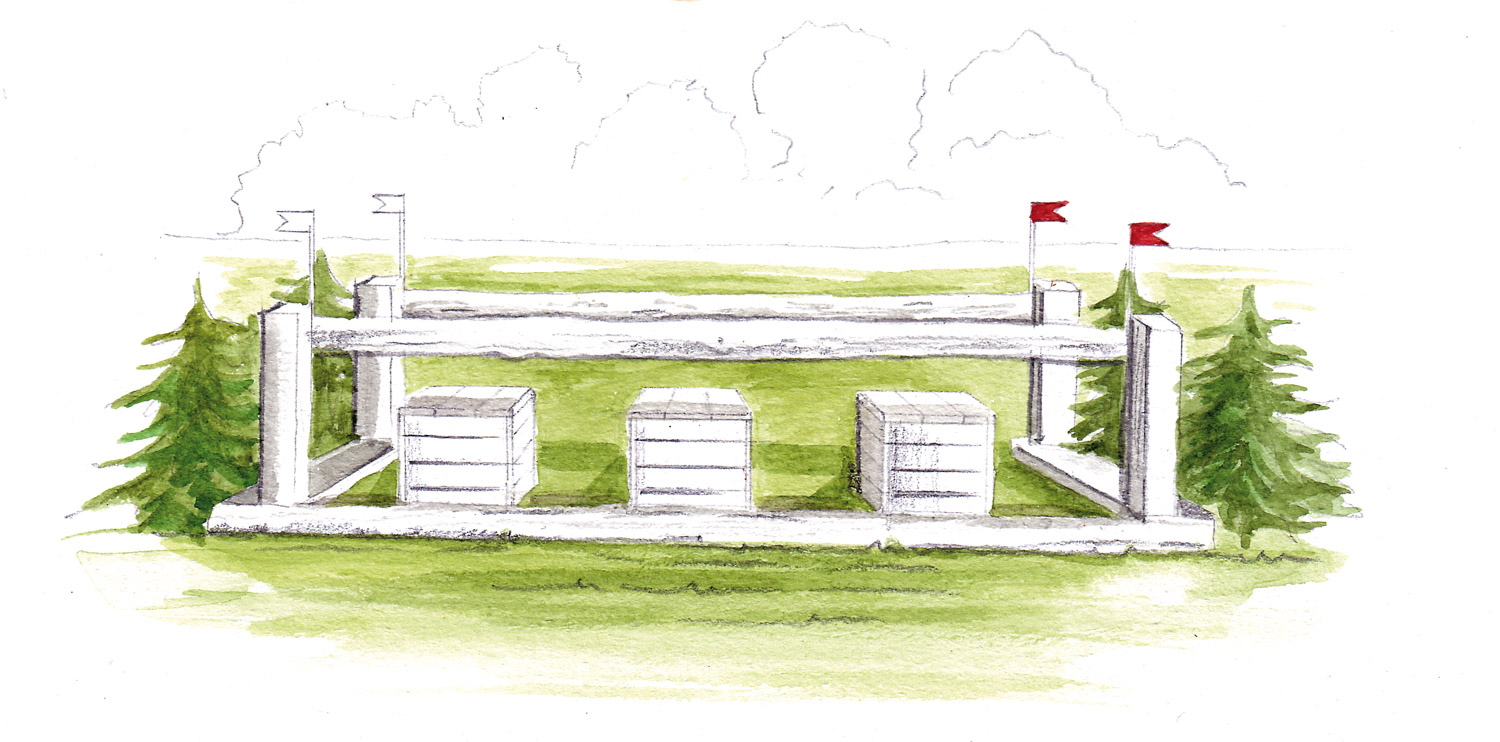
The last question on this championship course, the Oxer (23) followed by the two offset the Fendt Steinwälle (24) (25) requires good, accurate and positive riding. A glance off here would be very easy to have and it could prove costly when it comes down to the medals. It is not an easy question.
Fendt Steinwälle
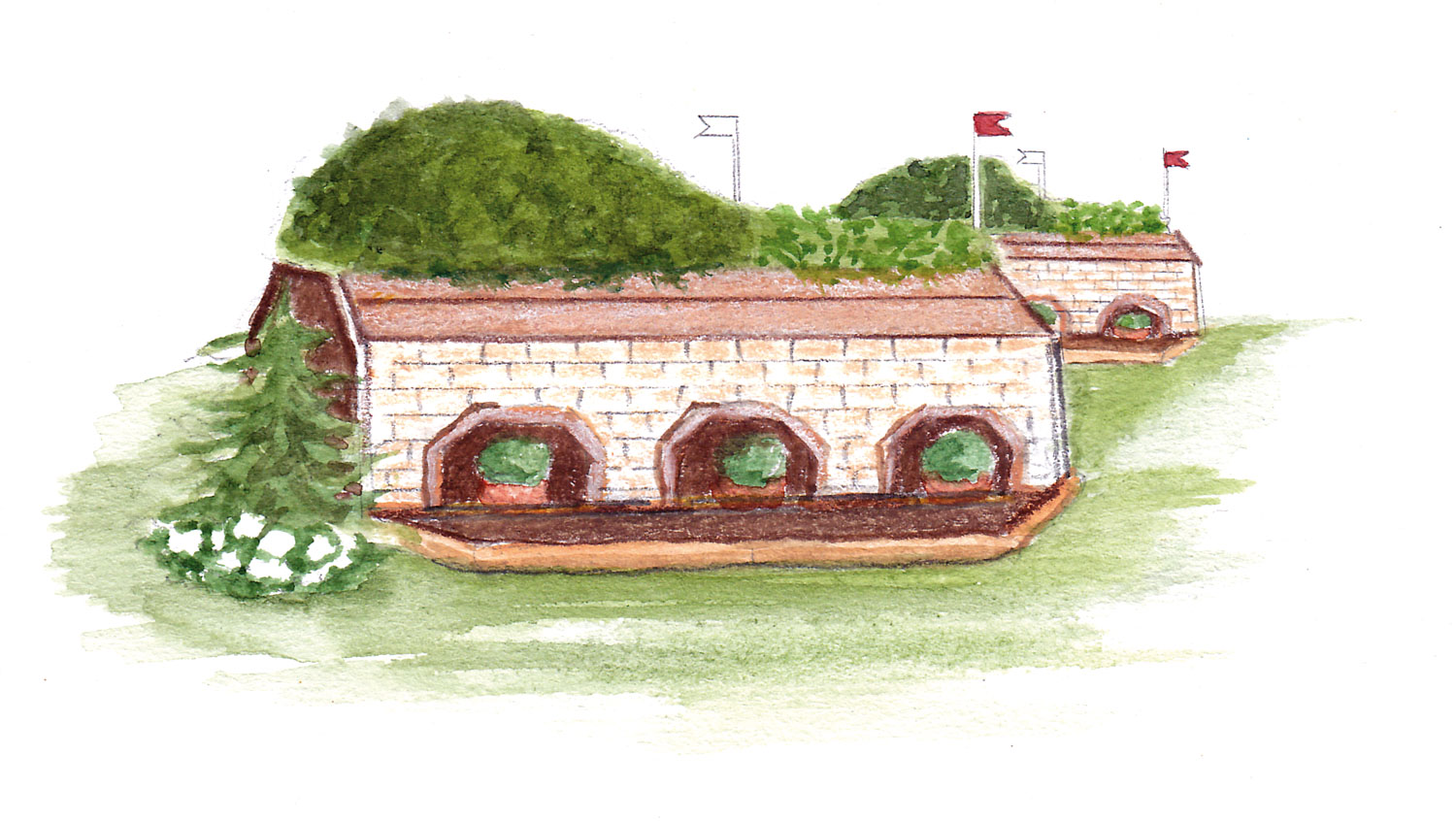
The last question on this championship course, the Oxer (23) followed by the two offset the Fendt Steinwälle (24) (25) requires good, accurate and positive riding. A glance off here would be very easy to have and it could prove costly when it comes down to the medals. It is not an easy question.
Longines Final Jump

And then finally, the last fence, the Longines Final Jump (26) brings them home.
Overview
Click on the picture for a larger view
Going Cross Country with the Course Designer
Mike Etherington-Smith is a highly experienced international course designer. He has designed the prestigious British events Chatsworth and Blenheim for many years and is currently designing the five-star-course in Adelaide. His CV includes the Olympic tracks in Sydney 2000 and Beijing/Hong Kong 2008 and the course of the World Equestrian Games in Kentucky 2010, where he also designed the CCI**** for many years. In his third Luhmühlen year, Mike EtheringtonSmith places higher demands on athletes and horses than in previous years. „Looking at the European Championship, I have not played all the trumps in June. Now there will be a few surprises.“
It is a real honour to design the European Championships here in Luhmuhlen where there is such great tradition and a well-deserved reputation for being a fantastic event with legendary competitions and great champions.
The team and all the volunteers here, led by Julia Otto the Event Director, is second to none as was evidenced earlier this year when there was so much rain on the morning of cross country day in June. We only find out how good a team is when it is under pressure and this was one of those occasions when everyone was cool, calm and collected and just dealt with the challenge in an
outstanding way.
And so it is with great excitement, and some nervousness on my part, that we all look forward to these championships. I have turned the course around and this definitely gives it a different feel.”
As always the first 3 fences, the Auftakt der Sparkasse Harburg-Buxtehude (1), the Buschoxer (2), and the Voltaire Eichen (3) are there for the horses and athletes to settle the nerves. They are at maximum and should allow the riders to get their horses ‘in the air’ and in a good shape.
A bit of a gallop through the woods before reappearing at the Longines Wasser (4) which is where horses and riders need to be switched on. This fence has a near maximum drop and will be the first time that horses see a big crowd with atmosphere at one of the fences on the course. How this is jumped will determine how well the Longines Wasser (5abcd) jumps since it will all happen very quickly here. Riders won’t want too big a jump over number 4 or they’ll not have the control they would like to take the quick route at the water.
The quick route here is over the brush into the water, 4 strides to the angled boat in the water, and then what should be 3 strides to the narrow brush at the top of the slope. This is a real test of horsemanship for the riders and confidence and honesty on the part of the horses. Not an easy fence but there is an easier, very time consuming route for those who may not like the quick route which entails 4 jumping efforts.
Hof Sudermühlens Reiterbar (6) is what we call a let up fence even though it is at maximum dimensions as they make their way to the main arena for the next questions.
The Manzke Tisch (7) is one of the fences fitted with the MIM system, one of the FEI Approved Frangible Devices, and is straightforward, albeit at maximum dimensions, but it does relate to the next fence.
The Longines Kombination (8abcd) is designed to examine the rider’s ability and also the horses’ manoeuvrability and confidence with the curving right hand line over big fences – corner (a) to spread (b) to corner (c/d). If the first two elements are not ridden well the last one becomes very difficult and so it may be that we see several opting to go to the other end of the arena to jump the two other corners (c and d) on a curving line to the left which are the option for this one corner.
The Gärtnerei Wredes Rennbahnsprung (9) is one of the old steeplechase fences which those of us who are bit older will remember. It is straightforward but needs respecting.
Then to the Hannoveraner Gatter (10ab) where riders have a choice to either take the direct route on 2 strides slightly downhill or 3 strides to give themselves a bit more time. All these gates have MIM clips on and I am sure that the riders and horses here should make it all look pretty straightforward. Just a reminder though, if the frangible devices are activated it is an automatic 11 penalties which could prove costly in the final reckoning.
The Holzstoß (11) is another maximum although straightforward fence and I would expect the riders to use it to help set up for the Meßmer Teich (12abc) which comes very quickly after.
Meßmer Teich (12abc): This second water combination gives riders a choice – either straight down the middle over a big drop in (12a), 4 strides to a triple brush (12b), followed by another triple brush (12c) at the top of the slope out of the water, or take a long circuitous route which will take ages. This question requires bold, committed, and athletic riding and bravery, confidence, and honesty from the horse. It is a mix of bold fences and accuracy fences. Horses nowadays are very good at ‘locking on’ to what is in front of them and so even what we refer to as ‘skinny’ fences seem to jump pretty easily making a course designer’s job even more challenging. We shall see!
The Meßmer Mühlenhaus (13) is there to complete this sequence of fences and should not pose too much of a challenge at this level. Riders do need to still pay attention though to get their line right.
On then through the woods to the fischer Wellenbahn (14abc) which has a new look. The wall which makes up the second element was remembered by Julia Otto as being there even though it has been buried for a number of years and we thought that it would be good to bring it back to life for these championships. The silver birch rails (14a) are frangible and look impressive at the top of the rise; 3 strides down to the brush on top of the wall (14b) and then another 3 strides to the corner (14c) where riders can choose which side they prefer. Athleticism, confidence, and commitment along with the riders’ ability to ride this type of question is what is being looked for here.
The big, impressive Horseware Jump (15) is very inviting and even though it is spectacular it should not create any concerns for horses or riders as they head for the LVM Am Waldrand (16abc), a classic cross country fence with 1 stride between the frangible rails (16a) and the ditch (16b) and then 1 stride to the angled log (16c). Making them jump across the ditch can bring another factor in to play in that the riders will be wanting their horses to jump on the line through the combination whereas some horses may drift a bit jumping across the ditch at an angle. Again, for those who do not fancy the quick route there is an option to the last element which will use up valuable seconds.
The Rathaus (17) is straightforward and will serve as a bit of a set up fence for the next question at the Lake Land Rover (18abc). The quick route of the two slightly offset brushes (18a and 18b) on 1 stride seeks out those who are feeling confident whereas those who may be feeling a bit more conservative may well choose the longer option here, again using up time. Once they are in over 18b and its big drop in to the water there is the small matter of the narrow flower box (18c) as the last element and so riders will need to respond quickly to what their horses give them over 18b or risk a run out. There is an option to the direct line with another flower box on the far bank for those who may need a bit more time to get organised. Honesty, fitness, and decision making have to be considered at this stage of the course – do I go straight and risk a fault or do I play it safe but waste time?
The loop around this field then brings everyone back to the same water but with a different question. This time they jump the Lake Land Rover (19/20ab) with the direct line being the two boathouses (19/20a) followed by the Bird (20b) sitting on its nest in the middle of the water. I am still checking that horses and riders are still switched on and paying attention, a run out here would be so frustrating. For those who may be tiring by this stage I have separately numbered the boathouses and given an alternative to the second one (20a) so that they can have a flowing but long option to get back to the bird (20b).
The Charles Owen Royal Works (21) brush corner at the top of the slope coming out of the crater looks really big and will be a test of fitness, honesty, and athleticism at this stage of the course. The long route here is really only for those who may be tiring.
A long gallop then through the woods to the Trakehner (22), a big imposing fence which should jump really well especially coming from dark to light.
The last question on this championship course, the Oxer (23) followed by the two offset the Fendt Steinwälle (24) (25) requires good, accurate and positive riding. A glance off here would be very easy to have and it could prove costly when it comes down to the medals. It is not an easy question.
And then finally, the last fence, the Longines Final Jump (26) brings them home.
